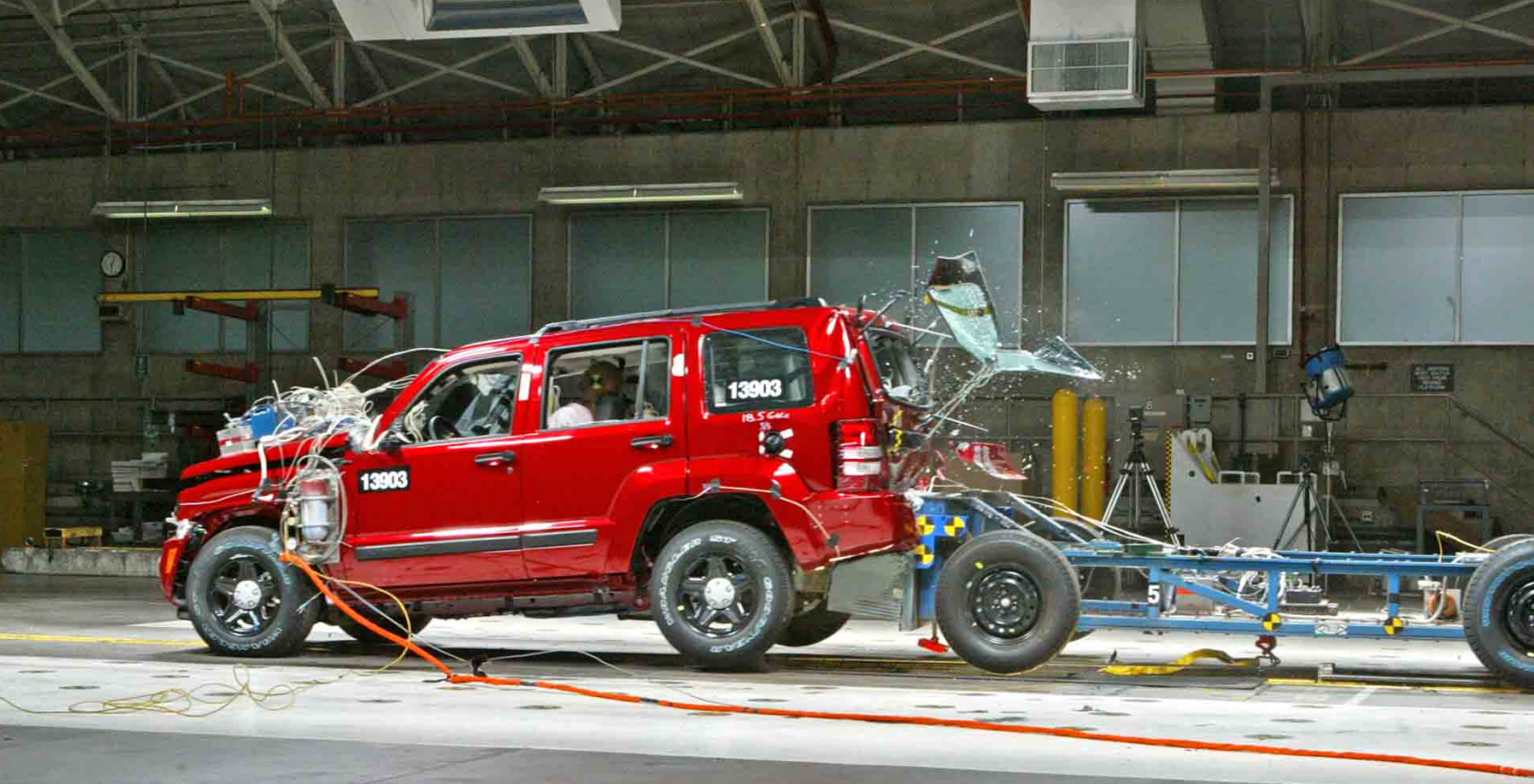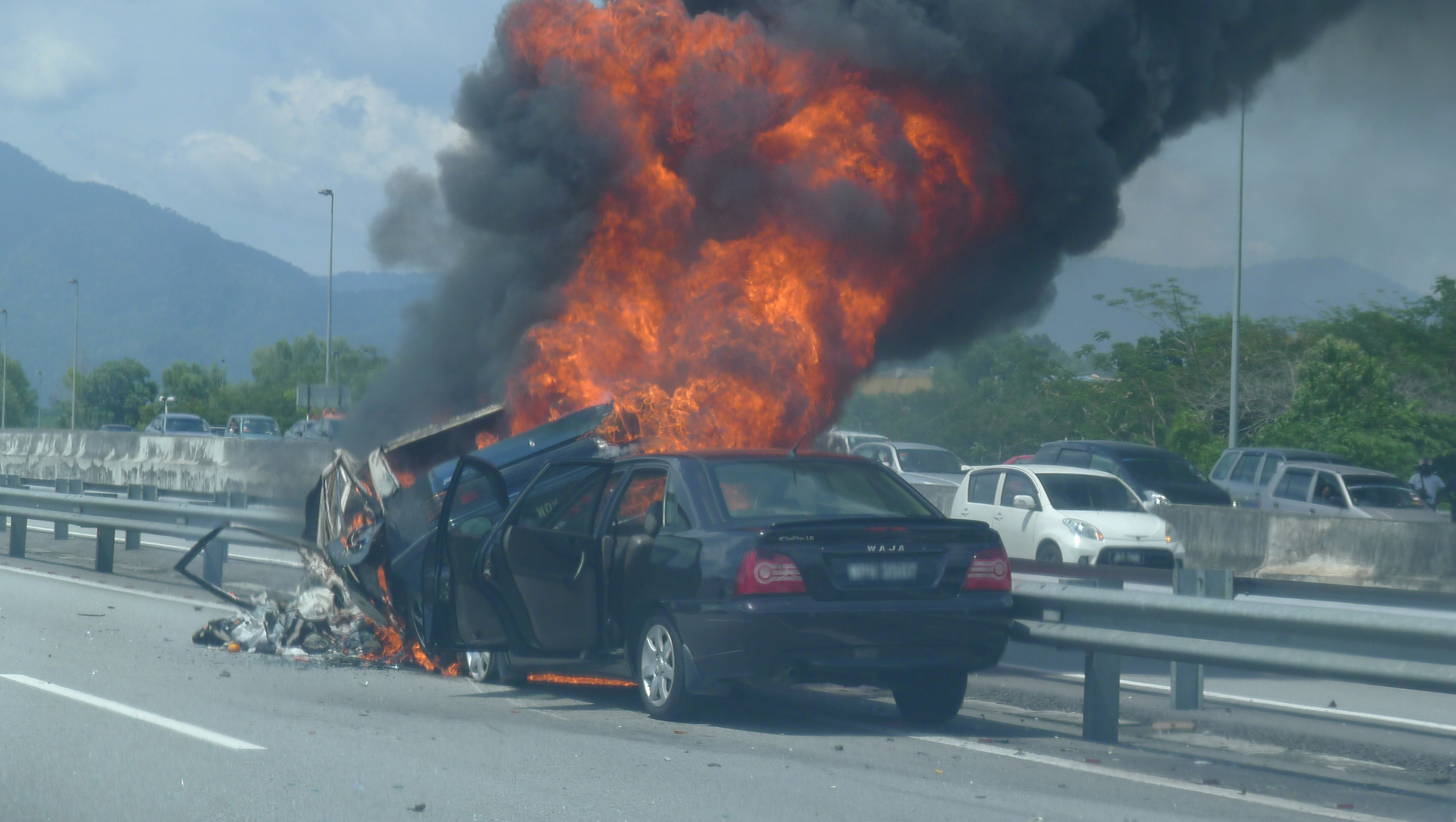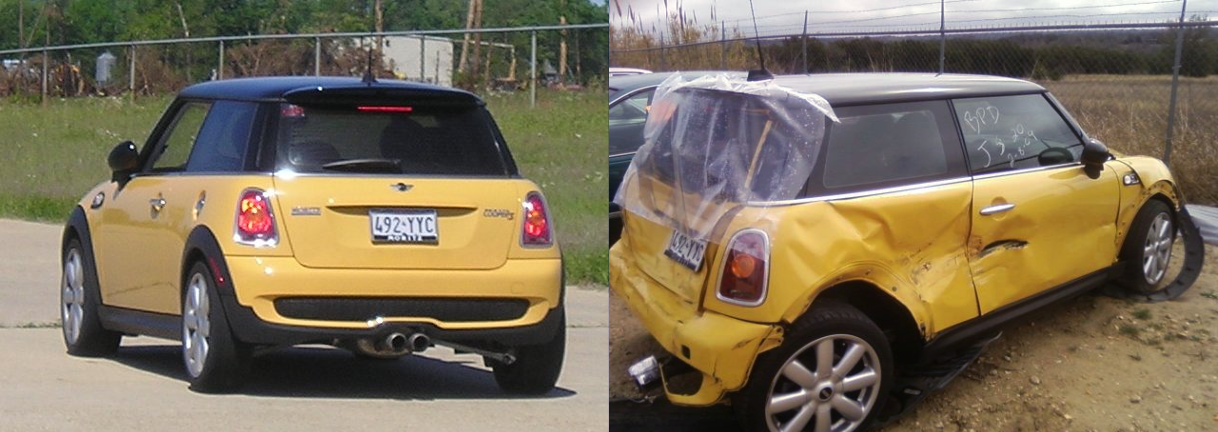Rear-end Collision on:
[Wikipedia]
[Google]
[Amazon]

 A rear-end collision (often called simply rear-end or in the UK a shunt) occurs when a
A rear-end collision (often called simply rear-end or in the UK a shunt) occurs when a
 *
*

 A rear-end collision (often called simply rear-end or in the UK a shunt) occurs when a
A rear-end collision (often called simply rear-end or in the UK a shunt) occurs when a vehicle
A vehicle (from la, vehiculum) is a machine that transports people or cargo. Vehicles include wagons, bicycles, motor vehicles (motorcycles, cars, trucks, buses, mobility scooters for disabled people), railed vehicles (trains, trams), wa ...
crashes into the one in front of it. Common factors contributing to rear-end collisions include driver inattention or distraction, tailgating
Tailgating is the action of a driver driving behind another vehicle while not leaving sufficient distance to stop without causing a collision if the vehicle in front stops suddenly.
The safe distance for following another vehicle varies depend ...
, panic stops, and reduced traction due to wet weather or worn pavement. Rear-end rail collisions occur when a train
In rail transport, a train (from Old French , from Latin , "to pull, to draw") is a series of connected vehicles that run along a railway track and Passenger train, transport people or Rail freight transport, freight. Trains are typically pul ...
runs into the end of a preceding train.
According to the National Highway Safety Administration (NHTSA), rear-end collisions account for only 6% of fatal automobile crashes. However, they account for 28% of all automobile accidents, making them one of the most frequent types of automobile accidents in the United States
The United States of America (U.S.A. or USA), commonly known as the United States (U.S. or US) or America, is a country primarily located in North America. It consists of 50 states, a federal district, five major unincorporated territorie ...
.
Overview
Typical scenarios for rear-ends are a suddendeceleration
In mechanics, acceleration is the rate of change of the velocity of an object with respect to time. Accelerations are vector quantities (in that they have magnitude and direction). The orientation of an object's acceleration is given by t ...
by the first car (for example, to avoid someone crossing the street) so that the driver behind it does not have time to brake and collides with it. Alternatively, the following car may accelerate
In mechanics, acceleration is the rate of change of the velocity of an object with respect to time. Accelerations are vector quantities (in that they have magnitude and direction). The orientation of an object's acceleration is given by the ...
more rapidly than the leading one (for example, leaving an intersection), resulting in a collision.
Generally, if two vehicles have similar physical structures, crashing into another car is equivalent to crashing into a rigid immovable surface (like a wall) at half of the closing speed. This means that rear-ending a stationary car while travelling at 50 km/h (30 mph) is equivalent, in terms of deceleration, to crashing into a wall at 25 km/h (15 mph). The same is true for the vehicle crashed into. However, if one of the vehicles is significantly more rigid (e.g. a small car hits the rear of a heavy truck) then the deceleration is more typically reflected by the full closing speed for the less rigid vehicle.
A typical medical consequence of rear-ends, even in collisions at moderate speed, is whiplash
Whiplash may refer to:
* The long flexible part of a whip
* Whiplash (medicine), a neck injury
** Whiplash Injury Protection System (WHIPS), in automobiles
Film and television
* ''Whiplash'' (1948 film), a US film noir about a boxer
* ''Whiplas ...
. In more severe cases, permanent injuries such as herniation
A hernia is the abnormal exit of tissue or an organ, such as the bowel, through the wall of the cavity in which it normally resides. Various types of hernias can occur, most commonly involving the abdomen, and specifically the groin. Groin herni ...
may occur. The rearmost passengers in minivans
Minivan (sometimes called simply as van) is a North American car classification for vehicles designed to transport passengers in the rear seating row(s), with reconfigurable seats in two or three rows. The equivalent classification in Europe i ...
, benefiting little from the short rear crumple zone
Crumple zones, crush zones, or crash zones are a structural safety feature used in vehicles, mainly in automobiles, to increase the time over which a change in velocity (and consequently momentum) occurs from the impact during a collision by a ...
, are more likely to be injured or killed.
For purposes of insurance
Insurance is a means of protection from financial loss in which, in exchange for a fee, a party agrees to compensate another party in the event of a certain loss, damage, or injury. It is a form of risk management, primarily used to hedge ...
and policing, the driver of the car that rear-ends the other car is almost always considered at fault due to following too closely, or lack of attention. An exception is if the rear-ended vehicle is in reverse
Reverse or reversing may refer to:
Arts and media
* ''Reverse'' (Eldritch album), 2001
* ''Reverse'' (2009 film), a Polish comedy-drama film
* ''Reverse'' (2019 film), an Iranian crime-drama film
* ''Reverse'' (Morandi album), 2005
* ''Reverse'' ...
gear. If the driver of the car that was rear-ended files a claim against the driver who hit them, the second driver could be responsible for all damages
At common law, damages are a remedy in the form of a monetary award to be paid to a claimant as compensation for loss or injury. To warrant the award, the claimant must show that a breach of duty has caused foreseeable loss. To be recognised at ...
to the other driver's car. According to data from the NHTSA
The National Highway Traffic Safety Administration (NHTSA ) is an agency of the U.S. federal government, part of the Department of Transportation. It describes its mission as "Save lives, prevent injuries, reduce vehicle-related crashes" rel ...
, the percentage of rear-end accidents in all crashes is 23–30%.
The Ford Pinto
The Ford Pinto is a subcompact car that was manufactured and marketed by Ford Motor Company in North America from 1971 until 1980 model years. The Pinto was the first subcompact vehicle produced by Ford in North America.
The Pinto was marketed ...
received widespread concern when it was alleged that a design flaw could cause fuel-fed fires in rear-end collisions.*
Recent developments in automated safety systems have reduced the number of rear-end collisions.
See also
 *
*Road collision types
Road traffic collisions generally fall into one of five common types:
* Lane departure crashes, which occur when a driver leaves the lane they are in and collide with another vehicle or a roadside object. These include head-on collisions and run- ...
*Tailgating
Tailgating is the action of a driver driving behind another vehicle while not leaving sufficient distance to stop without causing a collision if the vehicle in front stops suddenly.
The safe distance for following another vehicle varies depend ...
References
{{DEFAULTSORT:Rear-End Collision Road collisions by type Train collisions Railway accidents and incidents